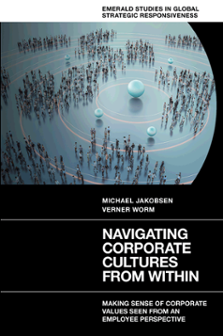
Index
Navigating Corporate Cultures from Within
ISBN: 978-1-80262-902-6, eISBN: 978-1-80262-901-9
Publication date: 21 April 2022
Citation
Jakobsen, M. and Worm, V.D. (2022), "Index", Navigating Corporate Cultures from Within (Emerald Studies in Global Strategic Responsiveness), Emerald Publishing Limited, Leeds, pp. 129-134. https://doi.org/10.1108/978-1-80262-901-920225013
Publisher
:Emerald Publishing Limited
Copyright © 2022 Michael Jakobsen and Verner D. Worm. Published under exclusive licence by Emerald Publishing Limited
INDEX
- Prelims
- Introduction
- Chapter 1 Adapting to Changing Conditions
- Chapter 2 Context and Organizational Change
- Chapter 3 Organizational Responses: Introducing the Case of Maersk A/S
- Chapter 4 Employee Perspectives on Core Values
- Chapter 5 Employee Perspectives at Headquarters
- Chapter 6 Employee Perspectives in the Shanghai Office
- Chapter 7 Employee Perspectives in the Tokyo Office
- Chapter 8 Employee Perspectives in the Kuala Lumpur Office
- Chapter 9 Identifying Fields of Contesting Narratives: Summing up the Interviews
- Chapter 10 Generic Aspects of Specific Organizations: Some Concluding Remarks
- Appendices
- References
- Index